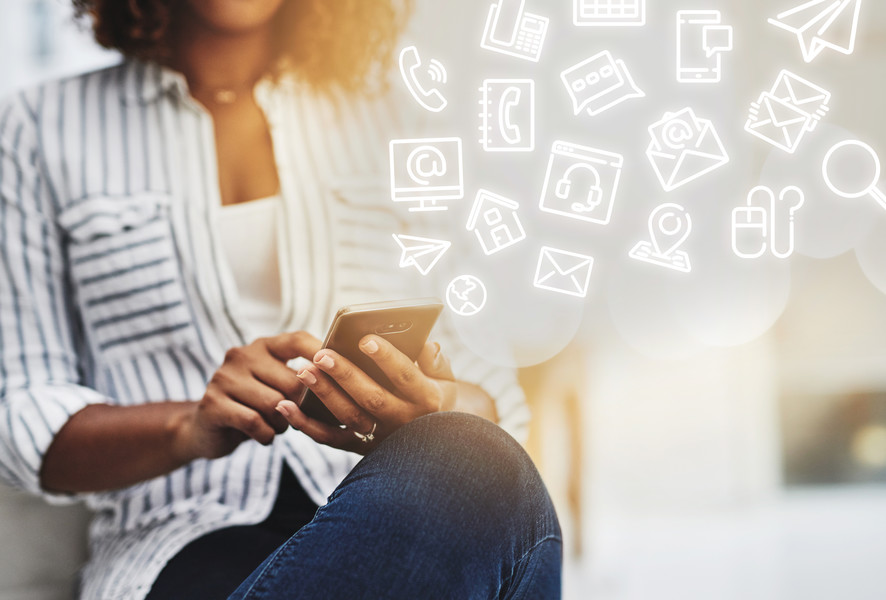Written By Andrea Henderson
As I sit here writing about the importance of communication to a healthy and productive work environment, I am literally getting bombarded with notifications. Text messages, private messages in Facebook, Google Hangout alerts, WhatsApp pings…you get my drift. Because people are able to see that I’m online, the all-access connections are coming at me left and right.
So, let me pause to talk about this idea of having all-access, then I’ll come back to the original reason for being in front of this computer. You may ask why I have so many options for people to contact me? LinkedIn, WhatsApp, Facebook Messenger, email, phone, Instagram, and the list goes on. The reason I offer all of these possibilities is because I know that the tools I use to communicate and how I communicate adds value to my customer and client relationships. People love options, and they want to communicate the way they want to communicate. That’s the bottom line.
Sometimes, the best method of communication is dictated by the clock. Working in a hospital, a 24-7 operation, I need to provide my clients communication pathways after the HR office closes. While hiring isn’t done 24-7, clients and candidates who work opposite shifts still need to be able to have their needs addressed. A patient-facing department may have a need for a temporary resource that needs to be filled urgently. A candidate who works nights and sleeps during my work hours may want to have a conversation about an opportunity. Having the ability to text, send a note via instant messenger or leave a message directly in voicemail, without the phone ringing, comes in handy for these urgent or off-hour needs.
Sometimes, the best method of communication is dictated by customer/client/candidate preference. For example, there are text people. They will answer a text message anytime of the day or night, but they won’t ever pick up a phone call. I understand that reading and answering a text message is often more efficient than taking the time to go through the niceties required in a phone conversation. A text message can be responded to in places where taking a phone call would be completely inappropriate. I have a lawyer friend, a contemporary, whose outgoing message is “Please do not leave me a voicemail message. I will not retrieve it. Send me a text.” Another friend, a fellow Talent Acquisition / Talent Management professional, has an outgoing phone message that advises callers that if you leave her a voicemail she “will return your call……..eventually.” She has trained us to text her for a faster response because she is always on the phone with clients or candidates. If I try to reach a millennial or a member of Generation Z, I should surely text them. They don’t check emails as much. They don’t get on Facebook as often, so texting or sending them a direct message through Instagram might be better. These are the tools they use most often.
My doctor sends me a text message reminder for my appointments instead of calling. The practice provides a link to their calendar that I can use to confirm or reschedule, allowing me to do it immediately, rather than having to remember to call the office the next business day. The practice gets patients like me to act, right then and there, at my convenience.
As a recruiter, I always get faster responses from candidates when I provide multiple options for them to respond. This is probably painfully obvious, but they can’t let me know they are interested if they don’t ever get the message because mine is buried in the chaos of the 10,000 unopened emails in their inbox.
It’s not just the tool or technology we use to communicate that clients or candidates appreciate either. Sometimes it is how we communicate that delights our audience. I find it interesting that Generation Z prefers to communicate using images (pictures and videos) rather than constructing full sentences using the King’s English. This is a sweeping generalization but typically they will use a meme to share their thoughts on a topic; an emoji to agree to a coffee date; or a GIF to show their enthusiasm about a breaking news story. Now, I (an honorary millennial) on the other hand, love words. (I had a book on etymology when I was in middle school. 😱) I read books because I like to create my own images in my head. I prefer to read a book before watching the movie adaptation because the characters often don’t match the image I create in my mind of them. Yet, I know that videos, graphics, and memes are a method of communication that is effective for millennials.
At the end of the day, it is wise to understand your audiences’ communications preferences. Using the communication method and style that is most effective for getting the message across is a best practice and can be a competitive advantage. It allows you to move faster and creates brand loyalty. When someone knows they can communicate with you in a way that is familiar and comfortable for them, they stick around and continue to support you personally or continue to support your business or brand.
Having taken this detour, I didn’t get to finish the original piece I sat down to craft. So, stay tuned for the next article on communication.
P.S. Do you see this image? It’s a text exchange between my son, who is a millennial, and me. Can you figure out what we’re saying to each other? If you think you get it, post your translation in the comments. Note: my point was very clear to him!

